Maria Mukhina is a renowned tattoo artist whose work has already gained recognition at international tattoo festivals. A recipient of awards in the categories "Large Black and Grey Tattoo" and "Japanese Tattoo," she combines realism, graphic art, and elements of Japanese culture in her projects, creating unique designs.
In this interview, Maria shares her extensive experience in the tattoo industry, discussing how she overcomes creative and technical challenges, finds and develops her unique style, and maintains her inspiration. Her tattoos are more than just work; they are a synthesis of painting and tattooing skills, creating original projects that reflect her creative journey and her pursuit of self-expression in each piece.
Let's start with our traditional questions: tell us a little about yourself. Where are you from, what did you do before tattooing, and how did your career begin? Who was your mentor? Were there any challenges in the beginning?
- I was born and raised in Moscow. I’ve been tattooing for eight years now, and before that, my life was connected to traditional art and CG.
At different times, I worked with easel painting, Chinese ink, some airbrushing, and graphic art—drawing with a ballpoint pen and charcoal. At one point, I worked as an artist in the gaming industry, creating game environments, backgrounds, and models. But over time, I realized that neither physically nor mentally could I work in an office with a fixed schedule. My dream was always to work for myself.
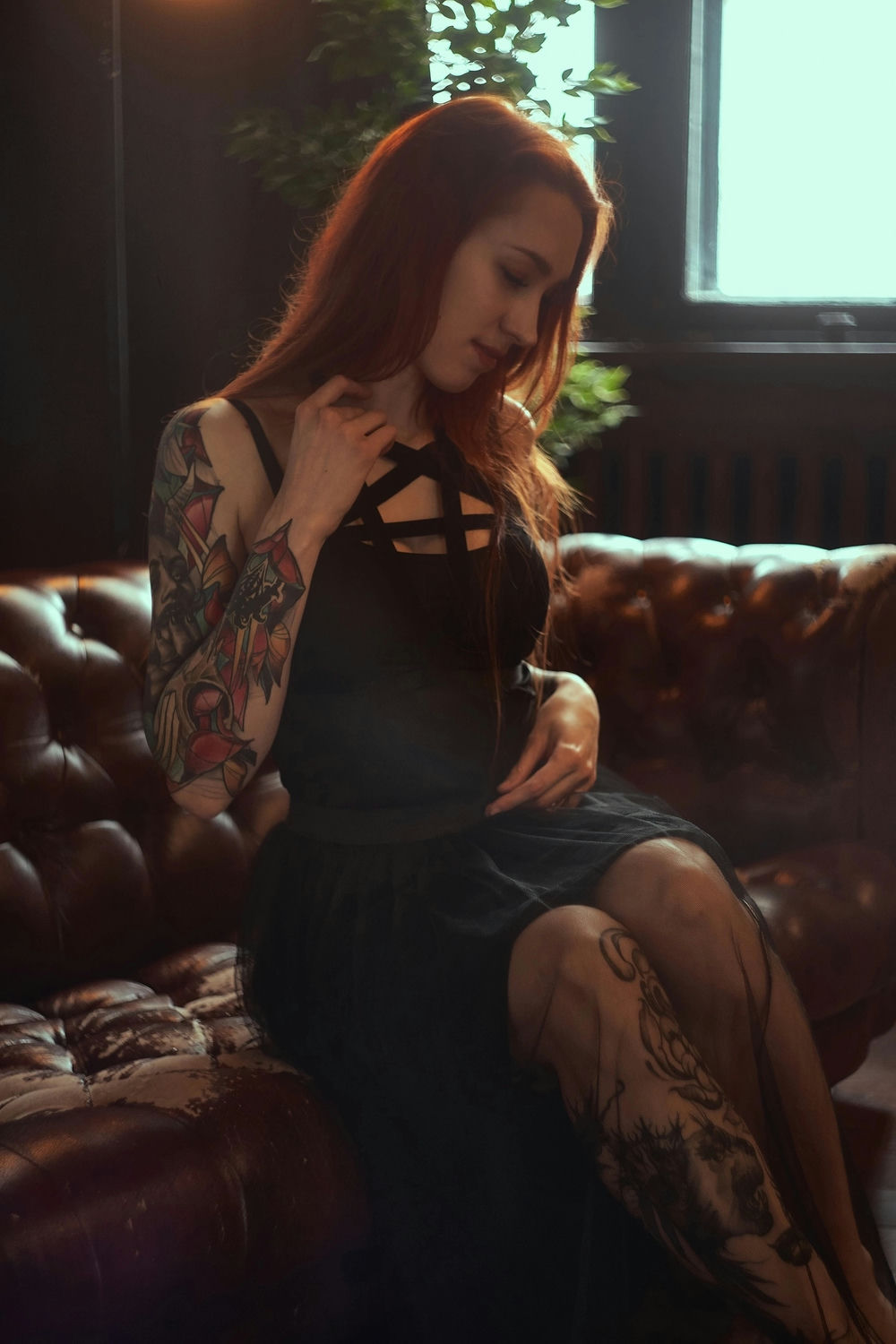
For a long time, I painted portraits on commission using oil, but at that time I didn't know it was possible to sell my work abroad. In our country, painting was less in demand at that time.
One of the most memorable commissions was a copy of Rembrandt's "The Night Watch," where I had to incorporate the faces of five clients with their amusing expressions—likely from a corporate event. The painting was one meter by one meter, and I had only 10 days to complete it. In the end, there were about 23 faces in the painting. I managed to finish on time, working almost without breaks, but the payment for this work was not very high—only 25,000 rubles. This experience made me reconsider my direction in art.
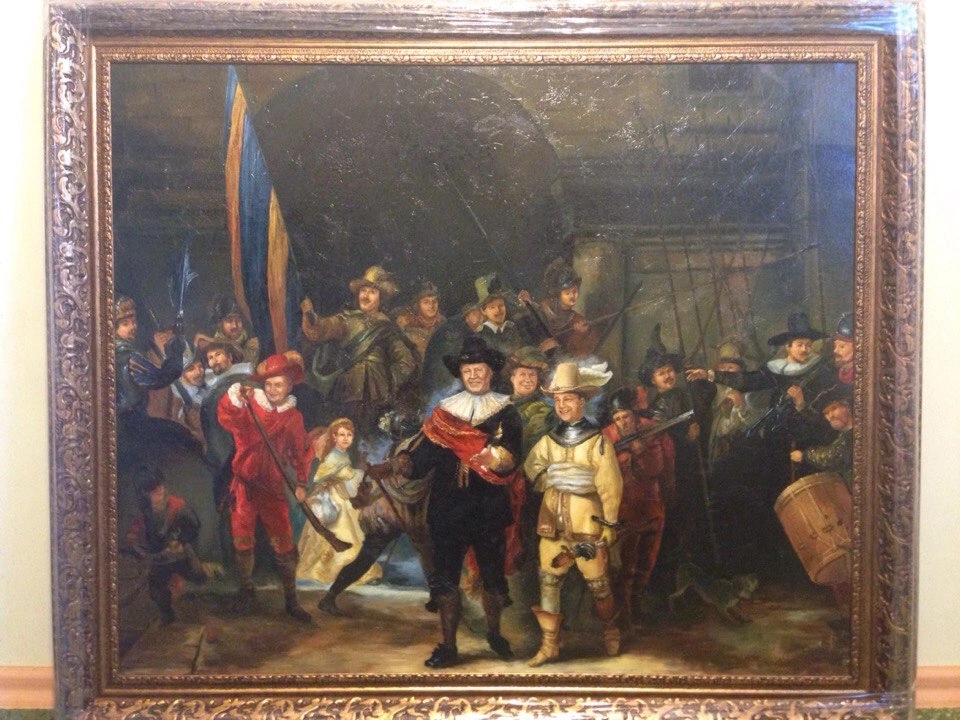
I love painting, but at that moment, I had to choose: be a starving artist or apply my skills in a more in-demand field.
Honestly, I never seriously considered a career as a tattoo artist. The tattoos I’d seen were, to put it mildly, awful—they were more like prison tattoos, blue rings on the fingers of random men in public transport, or something cheap and tasteless on young women. I had no experience of seeing truly beautiful tattoos.
Everything changed when I was working at a company involved in online gaming. One day, I saw a person in the elevator with a bright Japanese koi fish tattoo on his arm. It impressed me—I didn’t know tattoos could look so aesthetically pleasing.
At that time, I was going through a creative crisis, and I decided to try tattooing to see where it would lead.
The first equipment I bought was from a girl on a Tattoo-Marketplace for about 20,000 rubles, and I began to practice actively. I had no mentors, but I watched a lot of YouTube channels by tattoo artists and soaked up all the information I could.
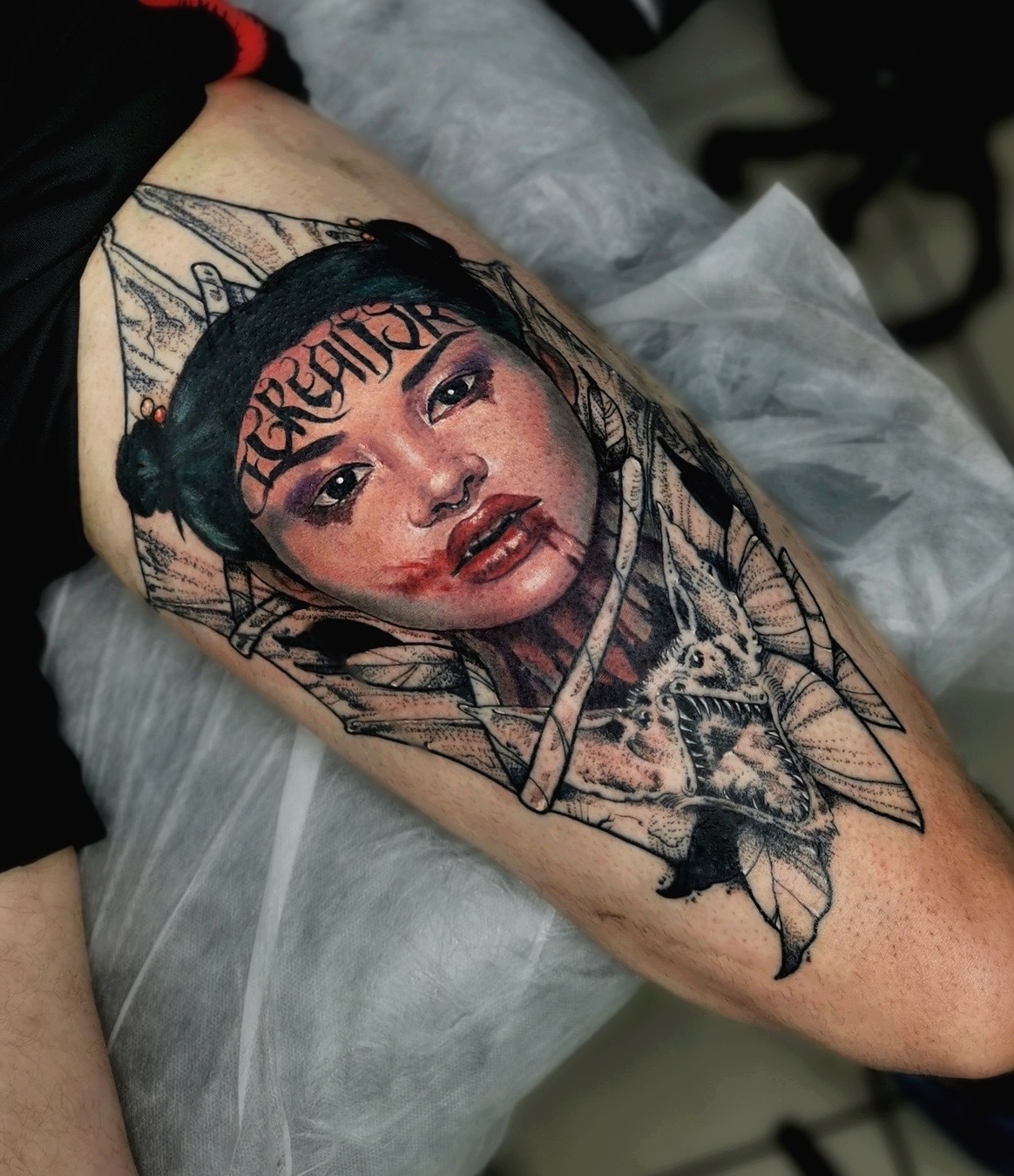
I was as confident as only a beginner can be, someone who doesn’t yet understand what lies ahead. It was a fun period. I went to parties, found people who were willing to get free tattoos, and there were quite a few of them. I covered up old tattoos with equally bad ones and happily wrote on VK: "Well, we covered up that old mistake" (laughs).
I was confident because, as an artist, the tattoo machine was just another tool for self-expression, and I was eager to master it like everything else.
I faced many difficulties. At the beginning of my tattooing practice, because I was learning on my own, I had to go through numerous challenges—ranging from solving technical issues to working with equipment that didn't always meet the demands and sometimes malfunctioned.
Nevertheless, I was very persistent and, frankly, fell in love with my new profession pretty quickly.

Do you have any formal art education?
- Yes, I have two art degrees. The first is a secondary professional education: college, with a specialty in "art and drawing teacher," at the graphic art department. The second is a higher education degree in "design and visual arts."
How in-demand are portrait artists in Russia?
- In my experience, portrait artists in Russia may be less in demand if they don't actively develop their brand and engage in promotion. I know many talented classical artists who create beautiful works, but the process of selling paintings often turns out to be long and requires significant effort. This led me to think that I could find more opportunities for creativity and self-expression in tattooing, where my work has gained broader recognition.
Now, with the advent of AI that can generate any image in seconds, I fear commissioned portraits will become even less in demand. People simply aren’t willing to pay the prices that artists ask for their paintings. This is a natural phenomenon in our rapidly evolving world.
But I should note that my information about the demand for painting in Russia might be a bit outdated since I stopped working in that field eight years ago, when times were very different.
Do you remember your first tattoo and how you felt after finishing the session?
- Oh yes, it was something creepy, to be honest. I never practiced on synthetic skin—once I tried tattooing either a banana or a tangerine, I don’t even remember. And I never tattooed myself. My first "guinea pig" was a friend who already had a few failed tattoos on his back done by another tattoo artist. We decided to cover it up in a post-apocalyptic style: an old revolver, a face in a helmet and gas mask, the phrase "War never changes," and a nuclear explosion in the background.
The funniest part is that I never thought tattoos could hurt. I was shocked when my friend started making terrible noises and complaining about the pain during the session.
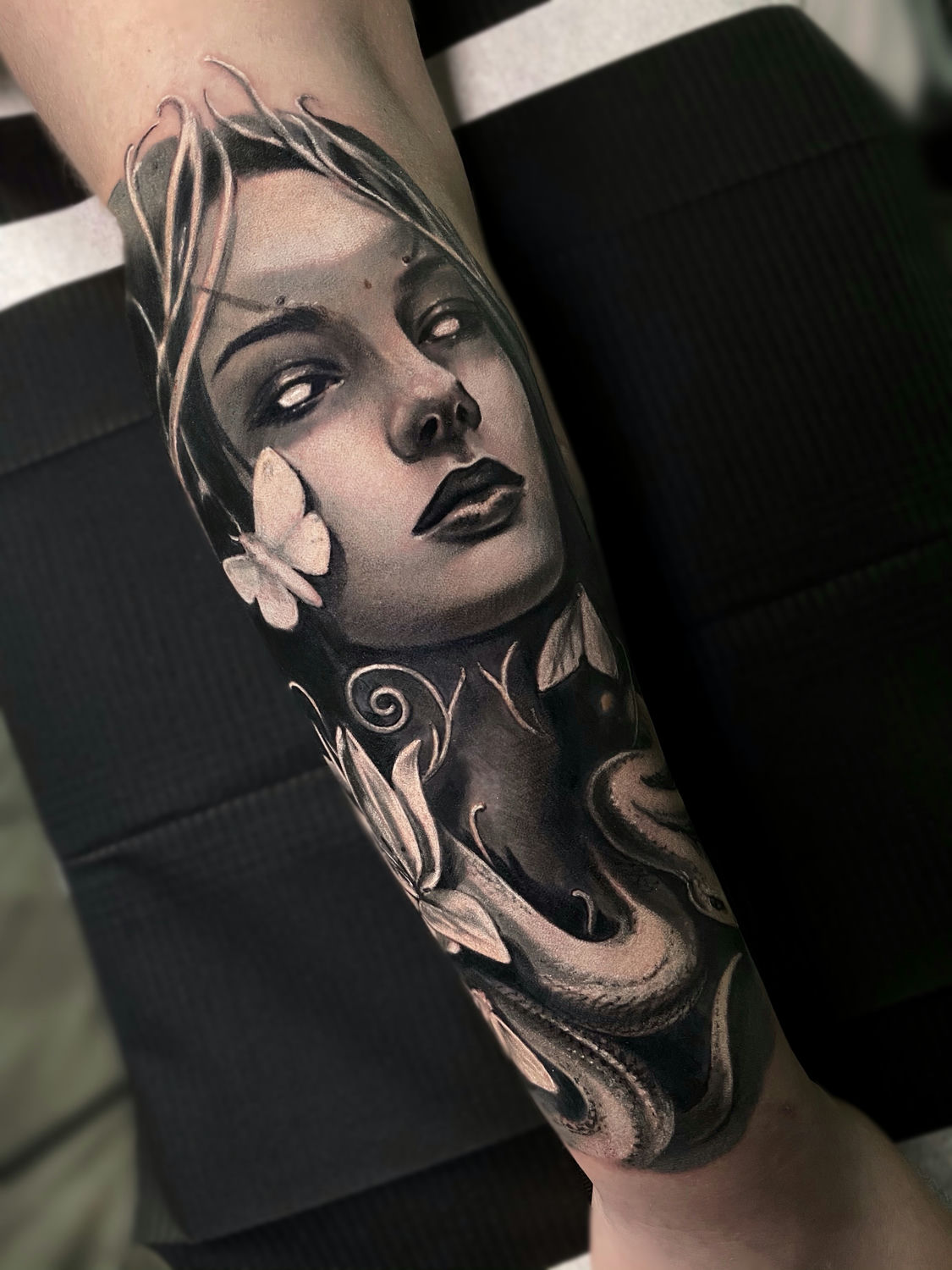
The result was predictably bad. I think that happens to most people who pick up a tattoo machine for the first time. Although, for a beginner, it wasn’t terrible because I already had artistic skills. But working with skin is entirely different.
Despite everything, this only inspired me to keep practicing. The scariest part was deciding to do it, and that step was already behind me. Ahead of me lay many challenges I hadn’t even imagined.
Where have you already worked?
- I’ve had the chance to work at several Moscow studios, such as Bad Bird, which unfortunately no longer exists. I also worked at Evil Tattoo alongside very talented artists and completed many long-term projects there. It was during that time that I discovered tattoo festivals, and it was a big revelation for me. I worked for a while at Grafit Tattoo with young but very capable tattoo artists. The last studio I collaborated with was Voda Tattoo, led by Vladimir Maksimov and his wife, Dasha. Currently, I’m taking a break from my practice, but I can’t wait to return to Voda Tattoo and create more amazing projects.
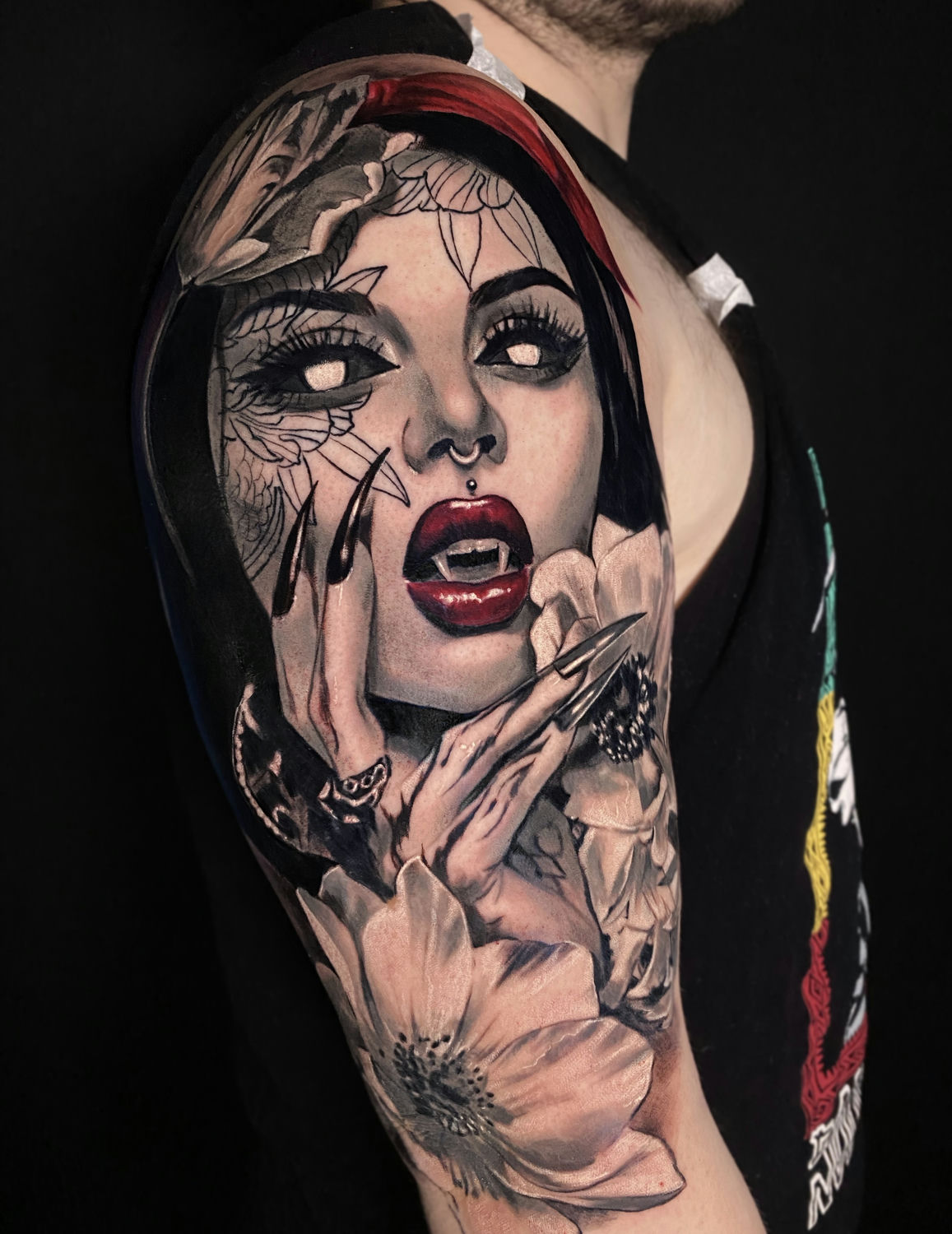
Is tattooing for you an art, a job, or something else?
- For me, tattooing is both work and art at the same time. It’s a path I’ve confidently been following for 8 years, and I’m glad I’ve found my niche where I enjoy growing and where more opportunities open up. Although I’ve always loved painting, in tattooing I’ve found the perfect combination of my artistic skills and creative freedom. This inspires me even more, as people are willing to wear my work on their skin, and that’s a great responsibility and a great honor for me.
I also went through a period of burnout. I think many tattoo artists experience this. Some overcome the crisis and return to work, while others move to a different field, feeling disillusioned. It’s not easy. In my case, the problem was that I expected too much from myself, criticized myself, and demanded too much. At one point, I just burned out. What helped was deciding to approach tattooing as a job, without setting overly ambitious goals. This took some of the pressure off, and I began to take everything more lightly. Now, I look at tattooing as art again, and I’m inspired by how beautiful work on skin can be.
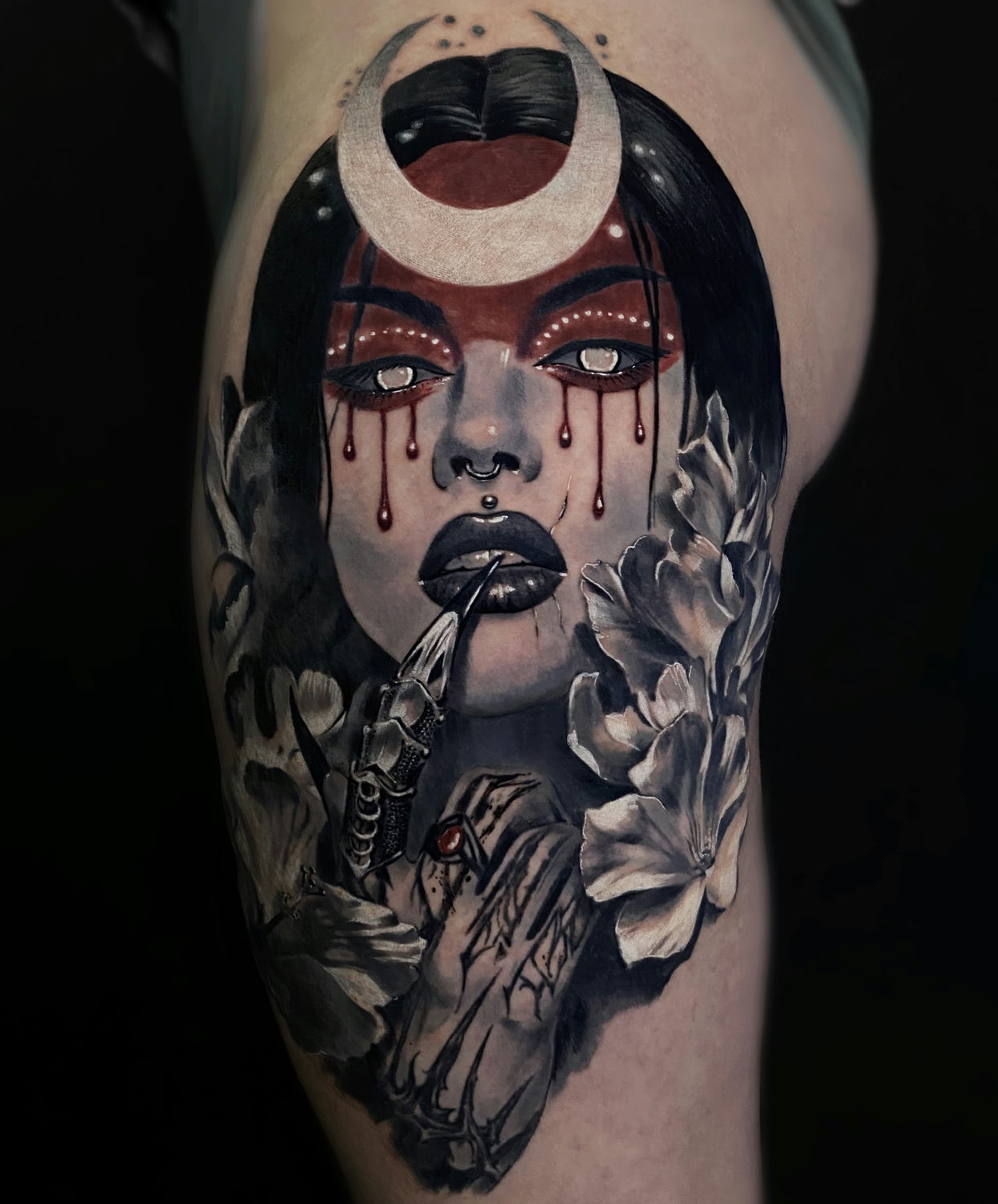
Judging by your portfolio, you seem to be moving from black-and-grey realism to near-realistic graphic tattooing. Tell us about this journey. What influenced your choice of direction?
- At the beginning of my journey, I tried many styles. I probably only skipped dotwork and ornamental. I wavered between the desire to delve into neo-traditional and realism. I struggled for a long time to decide which kind of realism to choose—black-and-white or color. Eventually, I came to a compromise with myself: I started mixing styles I liked—Japan, neo-traditional, and realism. It's like a collaboration with myself. I tried to focus on one thing, but kept returning to hybrid styles. And I’m okay with that now—I don’t need to choose.
What are your favorite subjects?
- My personal top includes portraits. I love drawing faces and hands. I also like flowers and Japanese motifs. I don’t draw animals often, but birds are the most common living nature elements in my work.
And also skulls—I really enjoy making skulls. They come to me the easiest and quickest.
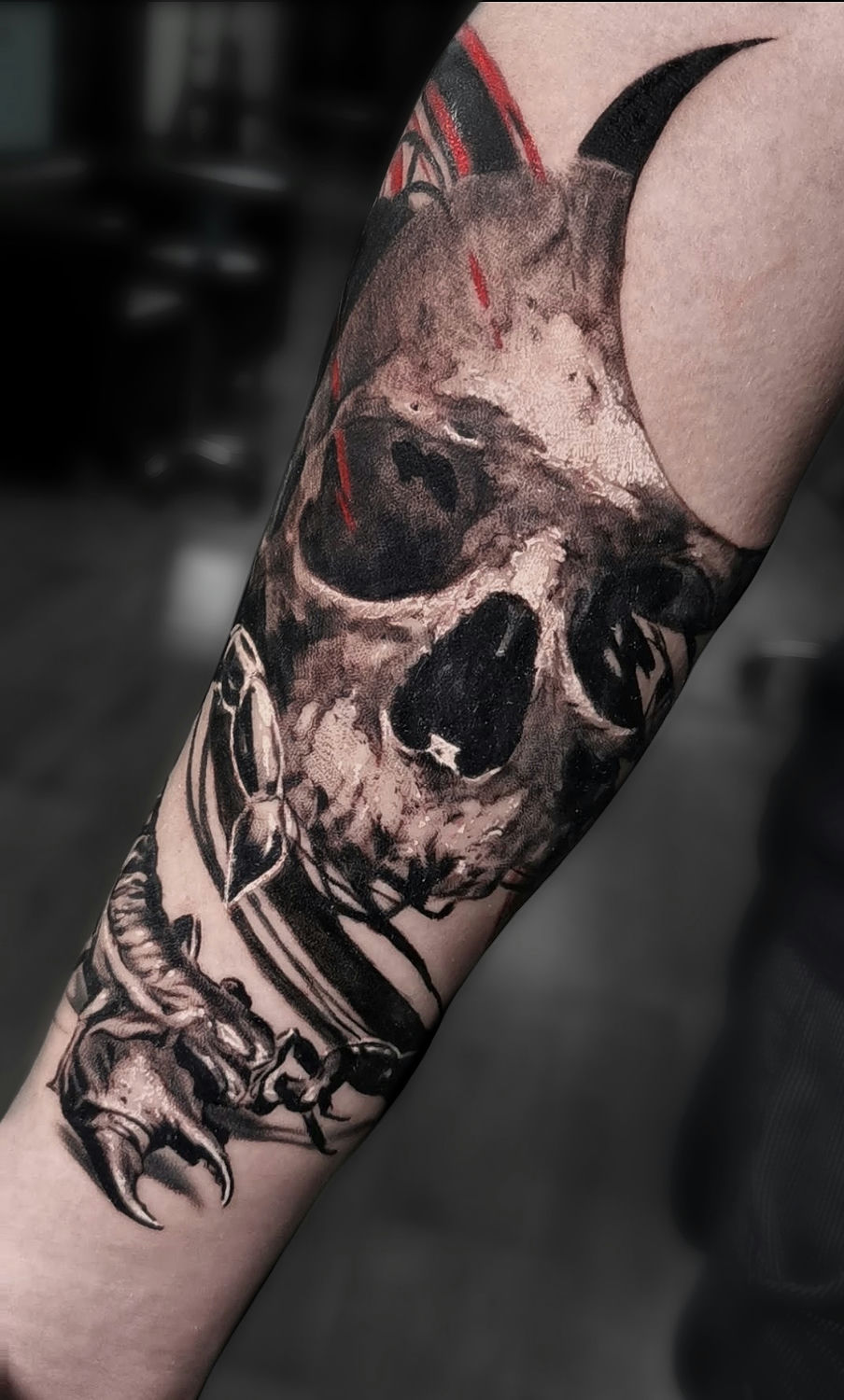
What features of your work would you highlight?
- My work can be described as realism, but the faces in them turn out not quite photographic but more drawn. The themes often include dark and aggressive elements. I frequently depict vampires, and I like to add local colors to monochrome works—most often red. I just love the combination of black & grey with color.
So, if you need to create an angry Japanese vampire in black-and-white style but with red blood or a colored background—that’s my specialty.
What is the most important thing in tattooing for you?
- The most important thing in tattooing for me is quality. Human skin is a very complex foundation for visual art. It’s unstable: varying in density, dryness, sometimes hairy, and it gets injured and renews differently depending on hormonal background. Even if you work the same way, tattoos heal differently on different skin. Therefore, it’s important for me to hone my skills and learn from masters I respect.
It’s also very important to have a good visual culture. At one point, I removed from my feed all artists whose work was worse than mine, so I wouldn’t feel that “I’m better, I can relax.” I follow only those whose work inspires me, from whom I want to learn. I often watch them, especially if they post videos of their work process, to pick up some techniques.
As for tattoo themes, I’m definitely more drawn to darker subjects. However, I don’t place much importance on what is depicted. I focus more on how it is depicted and the design aspect, because the same theme can be presented in completely different ways, and that is really important.
Do you have any favorite tattoos, clients, projects, or unusual stories in your career?
- Unusual stories often happen in the early stages of a career when the clientele consists of people who are willing to trust their skin to a novice and are not too picky about price or quality. Among them, you often encounter funny or difficult personalities. For example, they might come to a session in a drunken state, with a noisy group of friends, or start sharing stories about police chases. There are also those who come with dubious intentions, especially towards female tattoo artists.
There have been more comical cases too. For example, once a client came to a session with a roll of toilet paper instead of the paper towels I asked her to bring. At the beginning of my work in a punk tattoo studio, I had to adapt to any situation, even wearing gloves that were not my size when the needed ones ran out.
Over time, such stories disappear. As your skill and reputation grow, the clientele changes—you start to attract people who appreciate your style and projects. The better your skill, the more favorite clients you have, making work a pleasure.
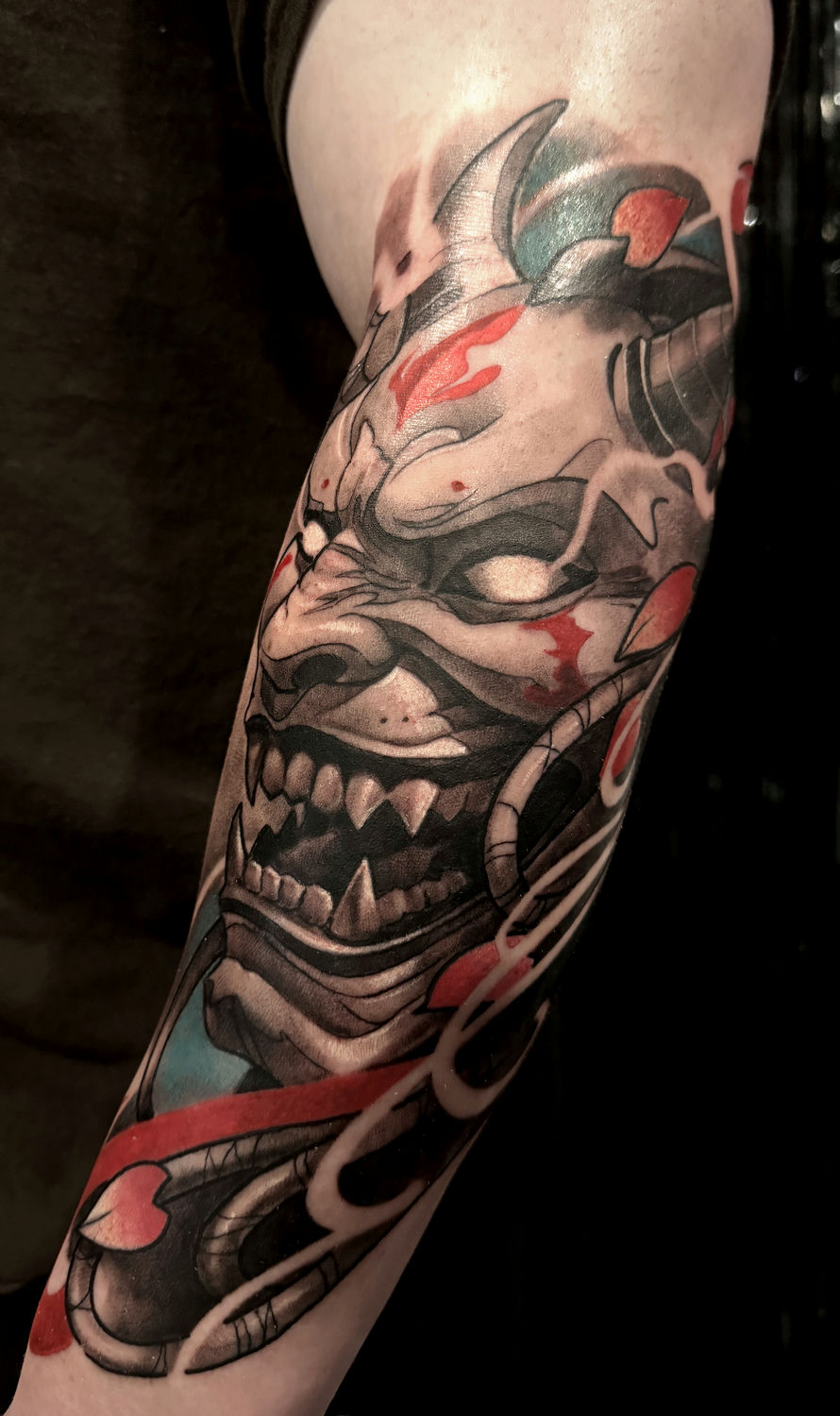
Do you travel a lot? Where have you been? How is tattooing perceived in different countries?
- I can’t say that I’ve traveled a lot. My list includes countries like the USA, Thailand, Vietnam, Montenegro, Serbia, Egypt, and Turkey. I haven’t been to Europe yet, although I planned a trip to Germany and France before the pandemic began. In my observation, there are more good tattoo artists in my home country than in other countries I’ve visited, though this is just a personal impression.
I’m very inspired by Asian cultures, and in the future, I’d like to visit South Korea, China, and Japan.
In which country is it best for a tattoo artist to work?
- If an artist is truly a master of their craft, they will find their audience in almost any country. Competition might be lower, but beautiful tattoos are appreciated everywhere. The exception is countries where tattoos are banned for religious or cultural reasons.
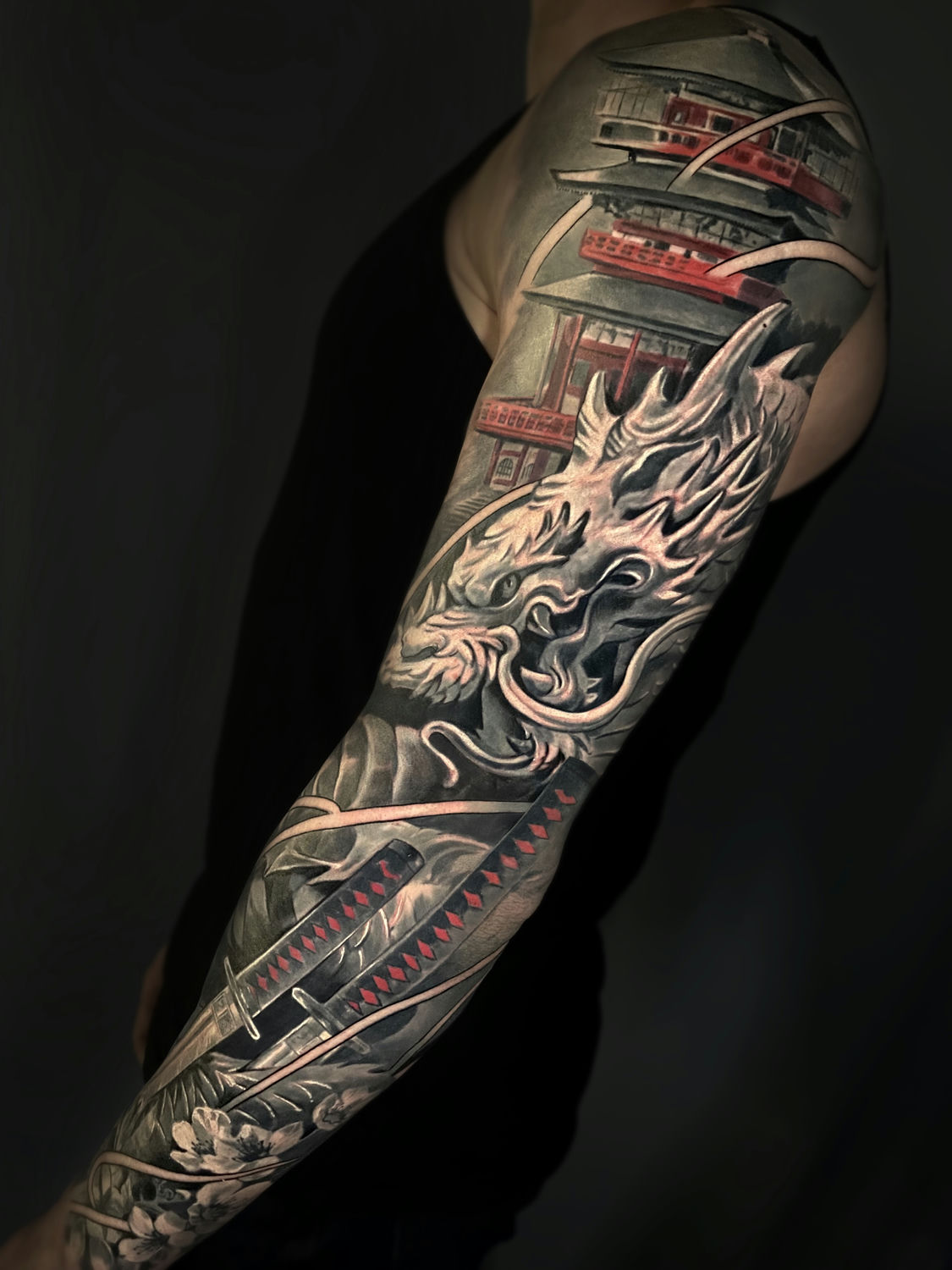
Do you have experience participating in conventions?
- I’ve participated in three tattoo festivals in the USA. In two of them, I received awards in the categories of "Large Black and Grey Tattoo" and "Japanese Tattoo." The first festival was a trial—I mostly observed and learned. Conventions offer a chance to reveal the competitive spirit, despite the stressful conditions: noise, crowds, and constant time management. However, three days in the tattoo community atmosphere is incredibly inspiring.
Have you collaborated with other artists?
- Yes, I had one collaboration in Moscow with a master who specialized in Japanese and graphic tattoos. At that time, I was working in a style close to comics. We completed one project and started a second, larger one, covering the entire leg, but we didn’t manage to finish it.
Collaborations are interesting because you can combine different styles, especially if they are opposite. I love mixing Japanese motifs with black-and-white realism and believe that such experiments enrich art.
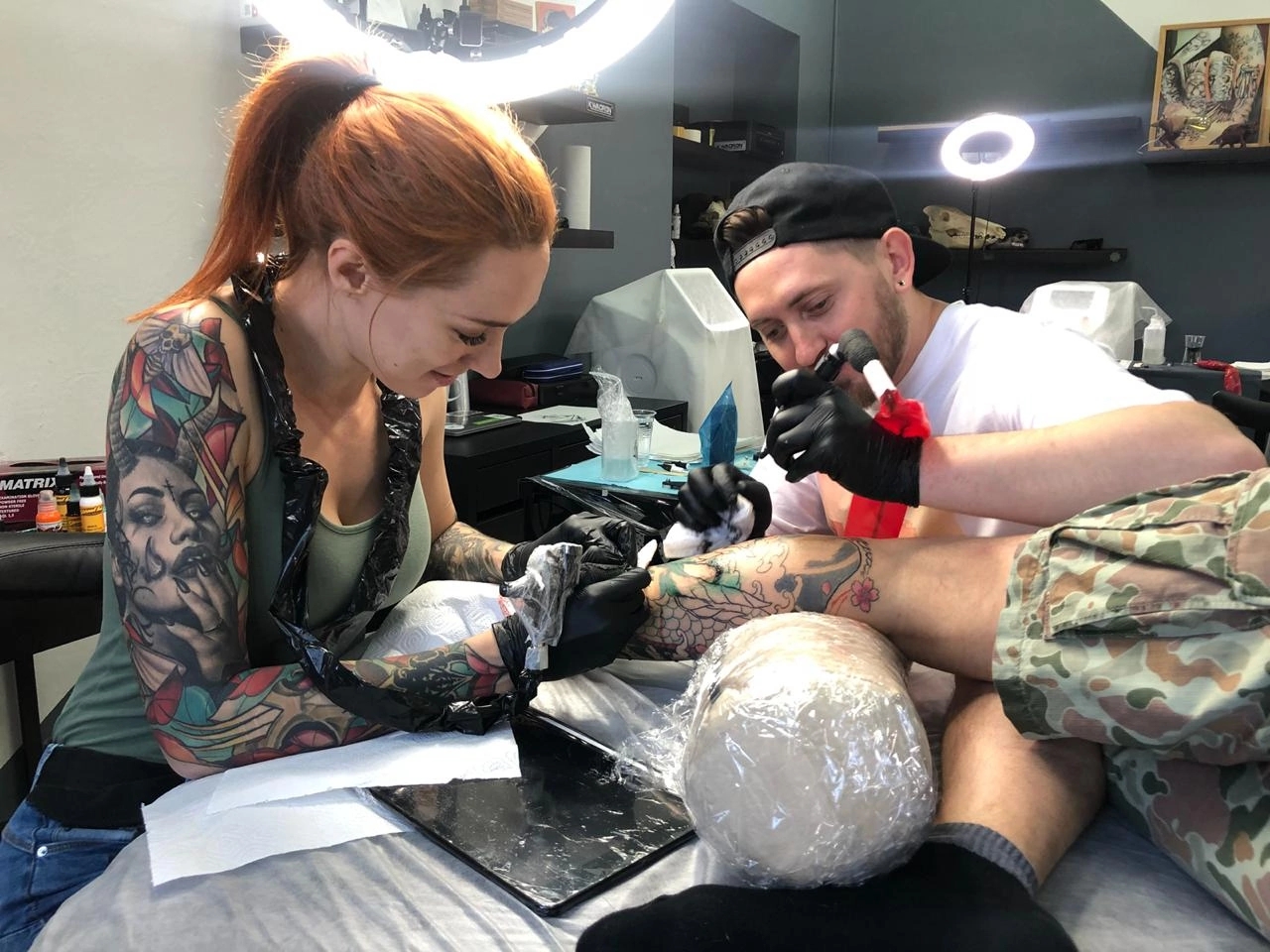
What is most important to you in a tattoo artist’s career? What goals do you set?
- For me, the most important thing is to continuously grow and develop, to be proud of my work. I’m an introvert, and creativity is my way of interacting with the world. I highly value people who share my tastes and want to wear my dark themes on their skin.
My goals are to find my perfect style and develop it. I also want to return to traditional painting. I miss easel painting and dream of painting again, not to order, but based on my own inspiration.
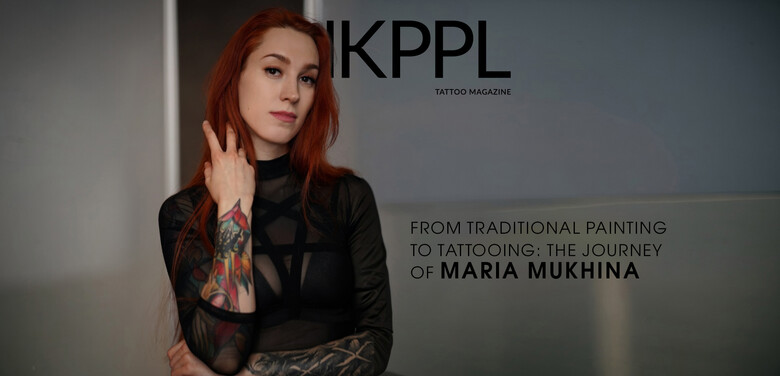










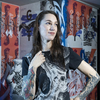
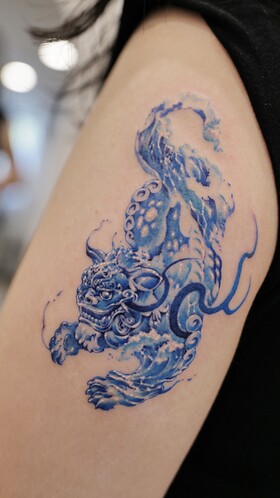

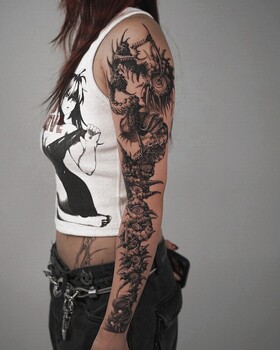
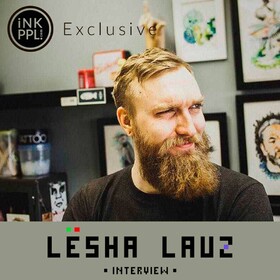
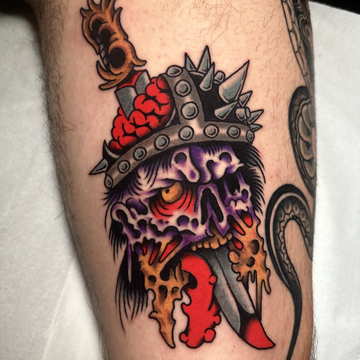
Comments (2)